Search Knowledge Base
What’s New in Release 5.0
New Features:
List Builder: A completely redesigned List Builder application has been added to replace the Target Criteria module from previous versions of the platform. This offers a simplified and more intuitive approach for defining contact lists to be used for targeted outreach activities, report generation, and contact management activities, e.g. adding and removing tags in bulk. The new List Builder also introduces the ability to consider Case Work when defining lists, including case status, category, location and much more.
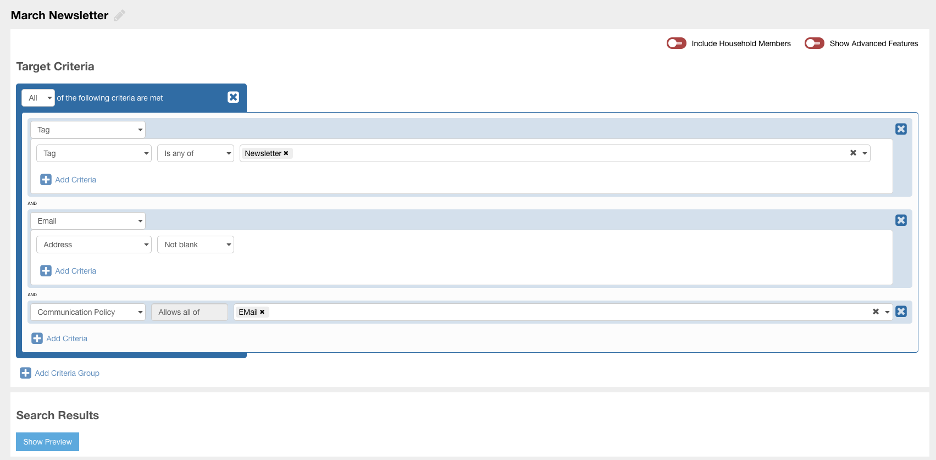
Case Work:
Esri ArcGIS Integration: AccessE11 now integrated with Esri ArcGIS to seamlessly tie together citizen reported issues and the physical assets that they relate to. Multiple connections can be set up to both enterprise and online ArcGIS services. Once connected, asset information stored into ArcGIS can be flexibly displayed within AccessE11’s embedded Case Work maps, and simply associated and stored with each case. Additionally, information about cases and their geolocations can be exported from AccessE11 to be imported and displayed in ArcGIS. Please contact support@netfore.com for more information.
Expanded and Simplified Case Location: The user interface has been modified to make geolocation of cases easier. Once a contact is selected, their address (if it is known) will be used as the default case location. If a different location is more appropriate, you are able to choose a new location by any one of the following actions:
- repositioning the pin by selecting it and dragging it to a new location
- left-clicking anywhere on the map to set the pin location
- performing an address lookup to use an alternate address
- using the asset location (only available with optional ArcGIS integration)
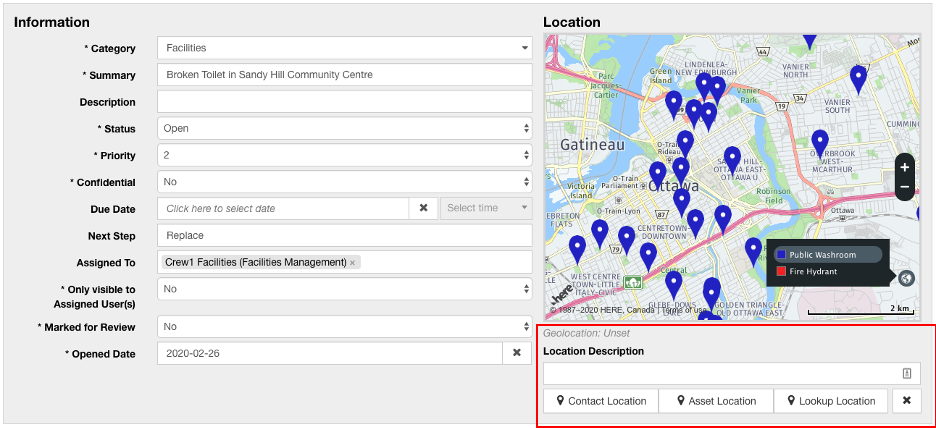
Default Assignee by Category: For each case category, default assignees can now be specified. When configured, default assignees are automatically added to a new case when the associated category is selected, eliminating the need for intake staff to worry about the appropriate case owner when creating a case. The option to have no pre-configured default assignees remains, and intake staff can still override the defaults when creating or editing a case. Email and web-form settings that also specify a default assignee will not be overwritten. Where both are set, the case will be assigned to both users.
Default Follow Up Date by Category: Similar to assignees, it is also possible to have the platform automatically set the follow-up date based on category. For example, the case category could be configured to set a follow-up for 5 days from today automatically on case creation. If for any reason the follow-up should be set to a different value, intake staff can make adjustments.
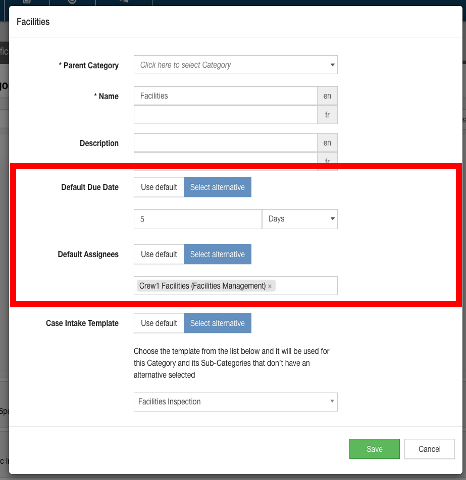
Choose Case Categories to be shown on Web Form: When configuring a web form inbound channel, it is now possible to customize the list of case categories that are visible to citizens when they submit a case online. This offers more granular control over the type of cases that can be raised online. Changes have also been made to the formatting of information captured in the web form to improve readability in the case office web application.
Dashboard Report Title Enhancements: Dashboard reporting has been enhanced to provide additional context when generating a PDF. Dashboard reports now include a header identifying the case office, the user that generated the report, the date and time, and any filters that apply. The header is included on all pages of the report.

Add ‘CC to Contact Emails: A new option has been added in case office administration to configure a list of email addresses to BCC whenever the system sends an email to a contact. A common application for this feature is to consolidate auto-generated emails for record keeping and audit purposes.
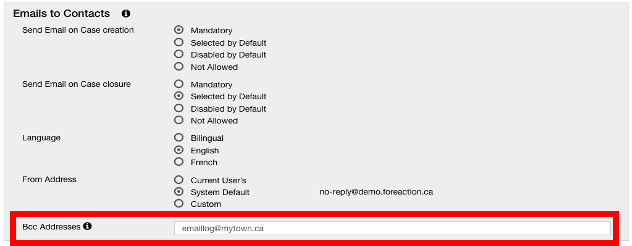
Contact Management:
Tag Management Enhancements: Tag management within the Contacts application has been redesigned for a user experience that is both improved and more aligned with other aspects of the system. The tag pickers are now type ahead for easier searching. In addition, users with appropriate permissions can now create and manage tags on the fly within the tag pickers themselves. This simplifies the steps that are necessary when the existing tag list is insufficient.
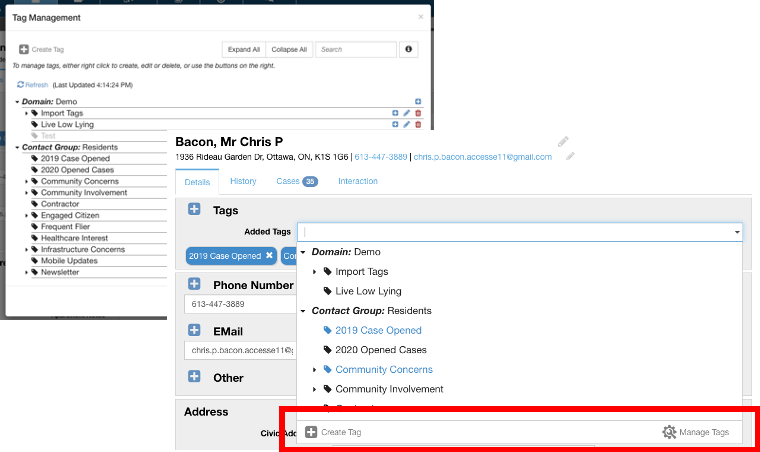
Master Contact Sheet: Notes stored against a Contact have been added to the master contact sheet report.
Reports:
Master Contact Sheet: A Master Contact Sheet report is now available under Reports where configured for a domain. Master contact sheet reporting can now be handled in the same way as other reports.
Administration:
Admin Module Consolidation: Administrative functions that previously appeared under Admin Settings in the main menu of the web application have been moved and centralized with other admin features under a single configuration settings icon. The Admin Settings menu option that appeared in previous releases has been removed.

